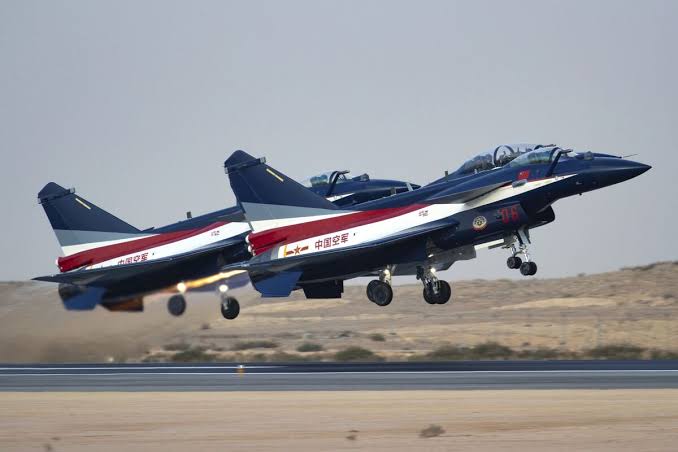Next to Pakistani Shahpar armed drones and not far from Russia’s Pantsir-SM surface-to-air missile (SAM) system, this week visitors to the World Defense Show, staged about 40 miles outside Riyadh, were offered a rare, up-close look at some Chinese military equipment, from full-sized Wing Loong drones, FT series precision guided bombs and HQ SAMs.
It was an opportunity for Beijing’s defense industry to attempt to outshine the competition on the “world stage” so to speak, similar to displays at other Gulf exhibitions. And though Chinese companies delivered a collection of platforms and armaments that outnumbered the US and all other international pavilions, those eager to get a glimpse at serial life-sized production fighter jets or warships would have been disappointed as not-to-scale models across all domains were very much the order of the day.
American defense firms may have come in droves to show off their wares, led by the likes of Lockheed Martin, Boeing and Raytheon, but Chinese firms claimed the most floor space outside host nation Saudi Arabia. Beijing also put on an aerial demonstration for the first time.
Data shared by organizers indicated that China’s floor space — much of it in a “China Defense” staging area — amounted to 4,668 square meters (over 50,000 square feet), the largest of any international invitee, ahead of Turkey with its own outsized presence at 4,355 square meters and the US at 3,335. Russia tagged along with just over 800 square meters.
In all, 36 Chinese companies attended, according to the show’s exhibitor list, while a flying display of J-10 jets from the People’s Liberation Army Air Force (PLAAF) Ba Yi Aerobatic Team also took place — a first for the World Defense Show. Though not taking up so much display area, American firms greatly outnumbered Chinese with over 100 organizations officially listed.
For US officials who have long been concerned about Beijing’s efforts to expand its influence in the Middle East, this year’s World Defense Show might have offered a worrying visual, but they could take solace that no new orders by China were recorded, at least publicly, during the show.
Broadly speaking, government officials and manufacturers from all nations in attendance did not report orders for big ticket items like fighter jets. That said, organizers announced on Thursday that, overall, 61 orders were placed at a value of SAR 26 billion ($6.9 billion), while 73 MoU agreements were also made, including several involving American and European companies.
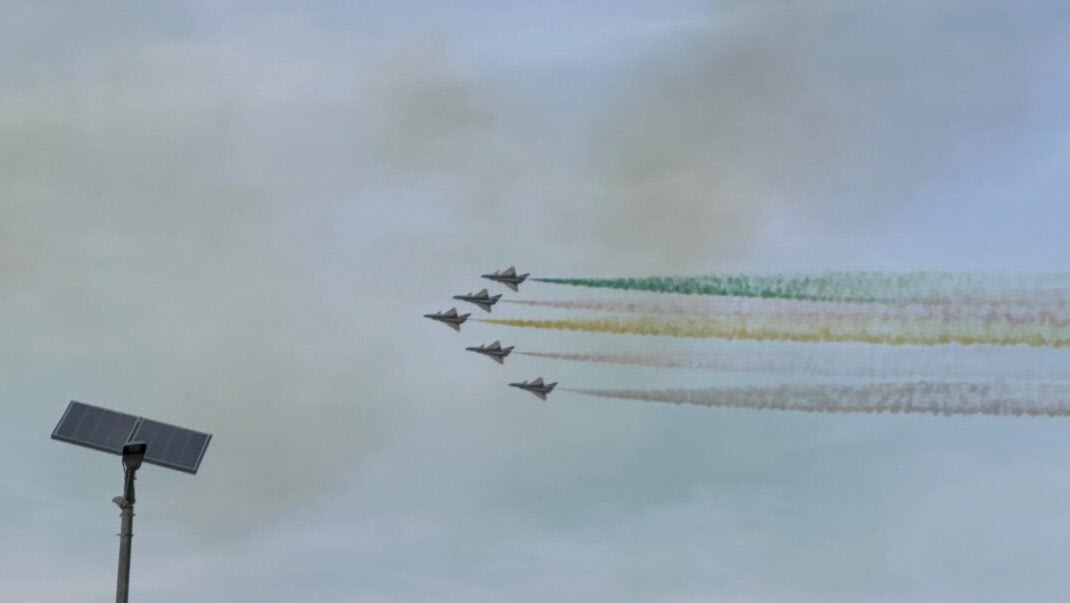
Leading Chinese defense contractors and military export authorities in attendance included Aerospace Long-March International Trade Co. (ALIT), China National Precision Machinery Import/Export Corporation (CPMIEC), China National Aero-Technology Import and Export Corporation (CATIC), China Great Wall Industry Corporation (CGWIC), China State Shipbuilding Corporation (CSSC), ELINC, China North Industries Corporation (Norinco) and Poly Defence.
The wide range of full-sized equipment on display by China was dominated by armed and unarmed drones, but also covered fighter jet models, air-to-air missiles, long-range air and missile defense systems, anti-tank and C4ISR kit.
A Wing Loong II armed drone with Saudi Arabia markings, like those sold to the Kingdom in 2017, the LD-35 35mm anti-aircraft gun and integrated air defense weapon system, a CM-302 supersonic antiship missile model and Norinco’s Blue Arrow air-to-surface missile family, were among the more eye catching systems exhibited. Norinco also showcased a Red Arrow 12E anti-tank missile and a 155mm GP155B GPS guided projectile.
Lesser-known companies like the Beijing-based Hoverwing Technology group also displayed their wares, including the HW150V hybrid vertical take-off and landing (VTOL) drone. The ISR platform has a range of 300 kilometers, maximum take of weight of 160 kilograms, endurance of 10 hours and cruise speed up to 150km per hour, according to company literature.
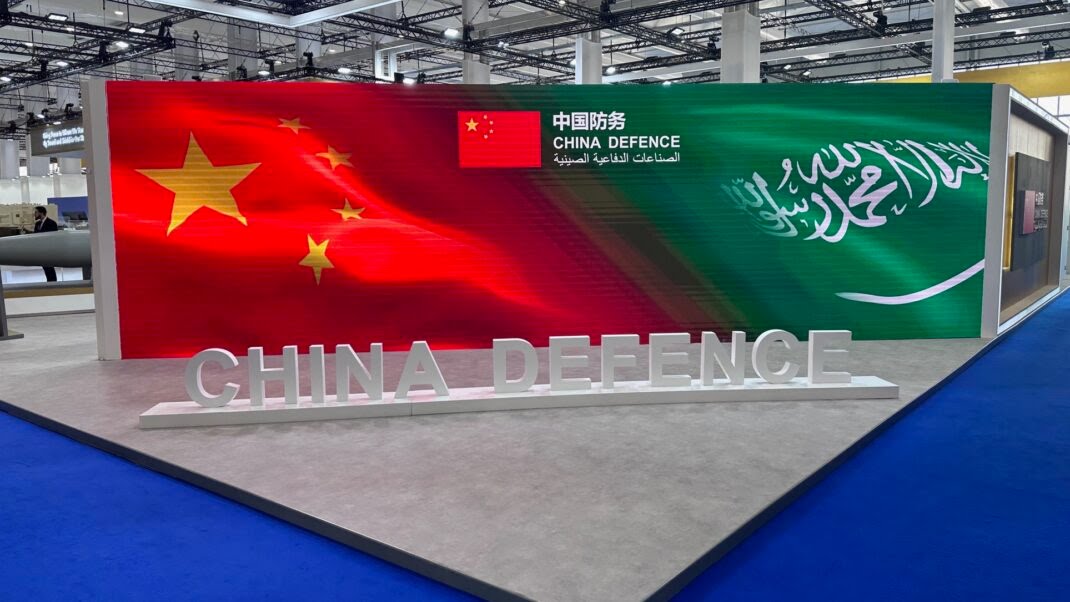
China and Saudi Arabia’s close military ties, which have included joint naval training exercises in recent years, remain highly concerning to the US and Western allies, but at a competitive level there remains little evidence that Beijing is disrupting US-Saudi defense business in any major way.
The US heads the list of global arms exporters, business that is largely driven by orders placed by Riyadh. Data [PDF] from the Stockholm International Peace Research Institute (SIPRI) shows that between 2018 to 2022, almost one-fifth of all defense exports by Washington were ordered by the Kingdom. In the same period, Chinese military exports were dominated by orders from Pakistan, Bangladesh and Serbia.
China also has a sizeable gap to make up if it is to catch the US in terms of defense exports, as it holds a lowly 5.2 percent share, lagging behind Washington’s 40 percent share, according to SIPRI.
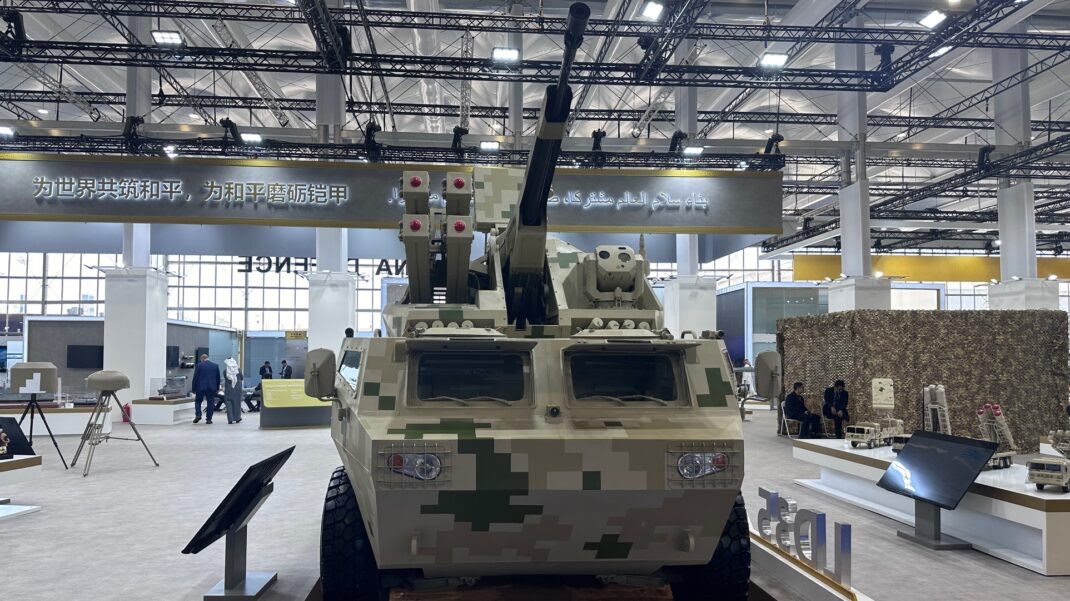
Russians In Riyadh
Meanwhile, America’s other top geopolitical rival, Russia, attended World Defense Show with less of a presence than China, but still its largest display in the Gulf since the Ukraine war began in February 2022.
Russian firms here showed a diverse collection of defense platforms not only as scale models, but the actual systems including Orlan drones, armored vehicles like MRAP, and Ilyushin military transport aircraft, IL–76MD-90A in the static display area, as well as missile launchers and Kalashnikov rifles.
Though only four Russian organizations were noted on the exhibitor list, products from more than 20 companies were actually on hand, many under the umbrella of the state’s defense export agency Rosoboronexport.
“Compared to 2022, the scale of the Russian exhibit has doubled,” said Alexander Mikheev, Director General of Rosoboronexport in a Feb. 1 statement.
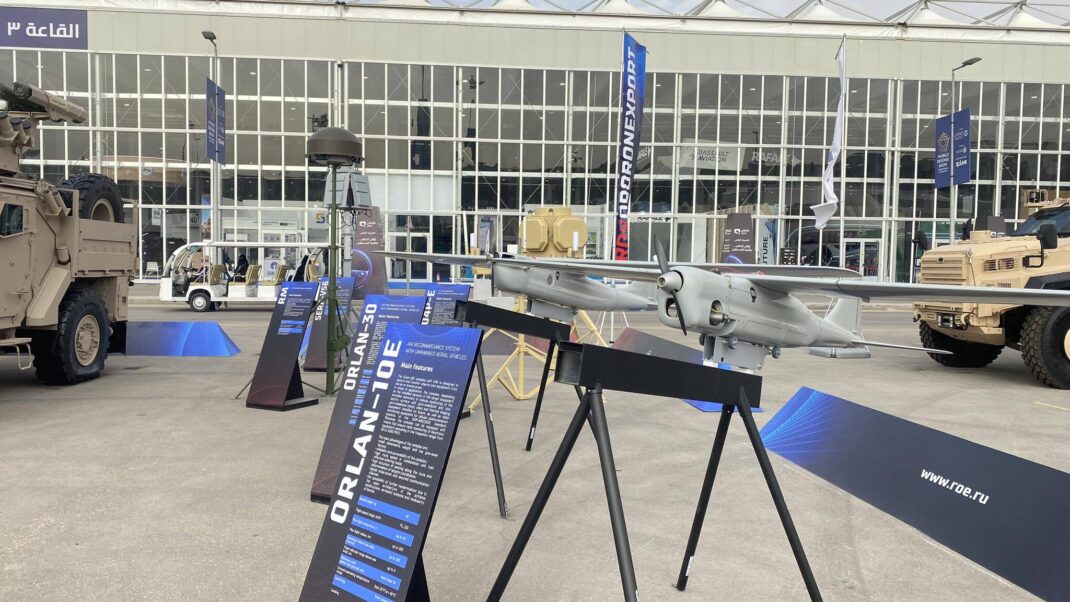
In a separate statement issued by the Russian government earlier this week, Manturov claimed that “most of the presented samples [of Russian equipment on display] have real experience of use in combat,” while noting Russia’s “products traditionally generate a lot of interest.”
Other Russian government agencies talked in similar terms, though much like the case of China, no orders were announced by Moscow.
Before the show Rosoboronexport had also said it offers several UAV types for export including Orion reconnaissance/strike UAV, Orlan-10E and Orlan-30 reconnaissance drones, as well as the Kub-E loitering munition.
“We are negotiating the local production of drones on the customer’s territory, joint R&D work on advanced drones,” the statement added. “These proposals are based on the rich experience in organizing such infrastructure in the mass employment of unmanned vehicles in real combat conditions.”
At the World Defense Show, unlike Dubai Airshow and IDEX that took place in the UAE last year, the Russian booth was on the indoor show floor, among other international firms stands and booths, and not isolated in a separate display area.
Saudi Arabia Minister of Defense Prince Khalid bin Salman bin Abdulaziz and Russian Deputy Prime Minister Denis Valentinovich Manturov met at the show to discuss “aspects of joint cooperation in military industries,” according to a Saudi Press Agency report.
BREAKING DEFENCE





